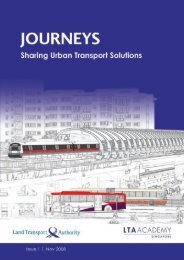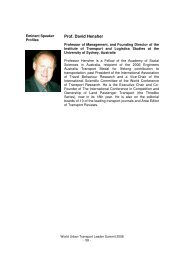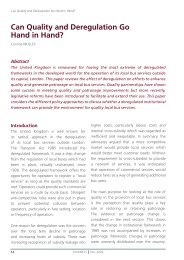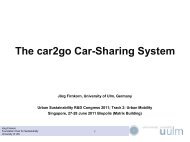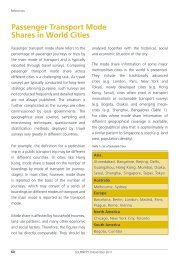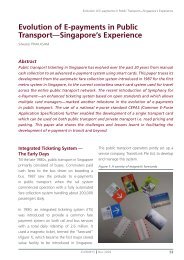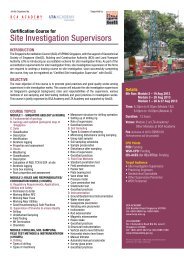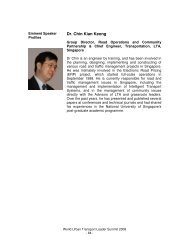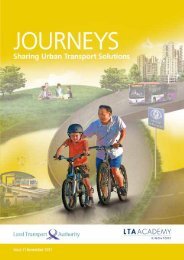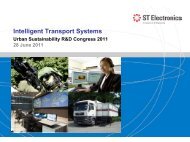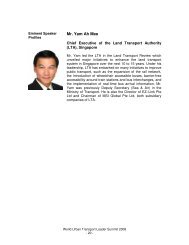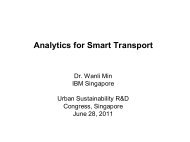Issue 4 May 2010 - LTA Academy
Issue 4 May 2010 - LTA Academy
Issue 4 May 2010 - LTA Academy
Create successful ePaper yourself
Turn your PDF publications into a flip-book with our unique Google optimized e-Paper software.
Proactive National Transport Strategy for Low Carbon and Green Growth in Korea<br />
A waterway connecting Seoul and North<br />
Korea’s Wonsan (Korea Peace Waterway,<br />
Figure 5) is proposed in order to secure<br />
water resources and also to ease the tension<br />
between the South and the North. It will<br />
be approximately 200 km long and will<br />
contribute to the promotion of tourism along<br />
the waterway.<br />
Figure 5: Proposed route of Korea Peace Waterway<br />
Green transport cities<br />
A new land use framework is required in order<br />
to reduce travel demand and to fully utilise the<br />
public transport’s potential. Development of<br />
high density cities around the KTX high speed<br />
rail stations would serve as energy efficient<br />
regional hub cities. It would also facilitate<br />
balanced regional growth and help reduce<br />
regional auto travel. High density development<br />
around public transit should be promoted in<br />
order to encourage public transit patronage.<br />
Pedestrian travel should also be encouraged<br />
by constructing more pedestrian friendly<br />
facilities. For example, Daegu city transformed<br />
its busiest downtown street into a transit mall,<br />
allowing access to urban buses only during<br />
the day. The Ministry of Land, Transport and<br />
Maritime also plans and develops pedestrian<br />
priority zones to improve walking conditions<br />
(Figure 6).<br />
12<br />
JOURNEYS <strong>May</strong> <strong>2010</strong><br />
Figure 6: Pedestrian priority area in Seoul downtown<br />
Green technology development<br />
in transport<br />
Non-motorised forms of transport lead to zero<br />
carbon emissions. Bicycles are extensively used<br />
in many European and Asian cities but their<br />
modal share in Korean cities is minimal due to<br />
limited infrastructure and low public reception.<br />
Bicycles should be promoted for short<br />
distance commuting by providing adequate<br />
infrastructure and increased safety. Figure 7 is a<br />
conceptual illustration of a Bicycle expressway,<br />
which is dedicated to bicycles, quite similar to<br />
light rail transit infrastructure.<br />
Figure 7: Illustrations of bicycle expressway



